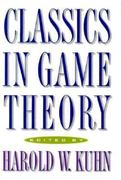Question
Consider the demand for lumber in a particular region given by Q=100-P. Lumber can be produced at a constant marginal and average total cost of
Consider the demand for lumber in a particular region given by Q=100-P. Lumber can be produced at a constant marginal and average total cost of $10.
a.If the regional lumber industry were perfectly competitive, what quantity would be sold, and what price would prevail in the market?
b.Suppose that the regional lumber industry were a monopoly.
i. Setup the profit maximization problem and find the optimal price and quantity that a monopolist would charge using uniform (single) pricing.
ii. Draw the demand curve, marginal revenue curve, and marginal cost curves, and determine show the profit-maximizing price and quantity.
iii.What is the proportion of competitive output that a monopolist provides? Show this on the graph.
c.Suppose the regional lumber industry is a Cournot duopoly (two-firm).
i. How would you expect these two firms to compete, Bertrand (on price) or Cournot (on quantity)? Explain why.
ii. Assuming Cournot behavior and that each firm has identical cost, setup the profit maximization problem for each company and determine the Nash equilibrium for each firm's output, price, and profit.
iii. Plot the Cournot duopoly price and quantity on a graph with the monopoly and competitive solution. Compare the deadweight losses across the three solutions (on the graph, you do not need to get a numeric solution). What happens to the quantity sold as more competitors are added to the industry?
d.Construct the Learner Index for your solutions in Part A and Part C and interpret each in the context consumer welfare.
Step by Step Solution
There are 3 Steps involved in it
Step: 1

Get Instant Access to Expert-Tailored Solutions
See step-by-step solutions with expert insights and AI powered tools for academic success
Step: 2

Step: 3

Ace Your Homework with AI
Get the answers you need in no time with our AI-driven, step-by-step assistance
Get Started


